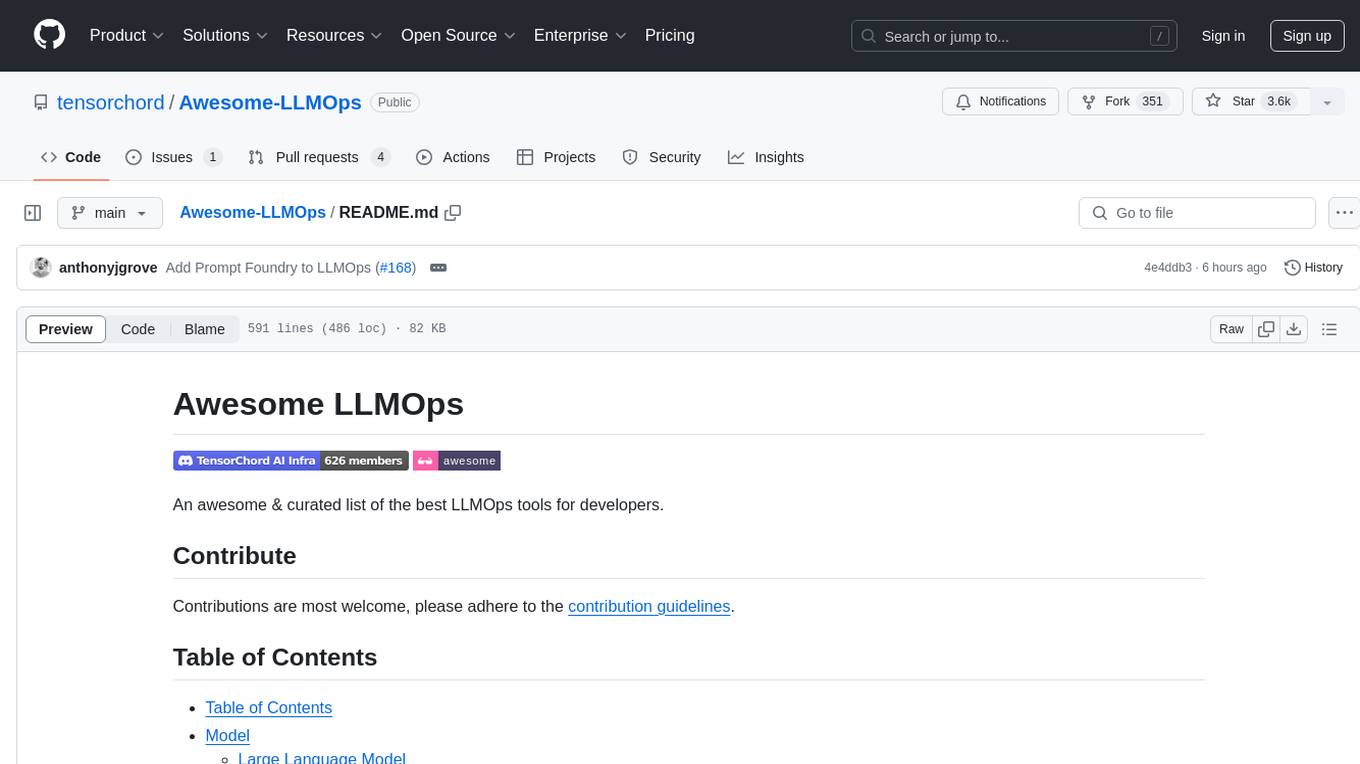
haystack-core-integrations
Additional packages (components, document stores and the likes) to extend the capabilities of Haystack
Stars: 165
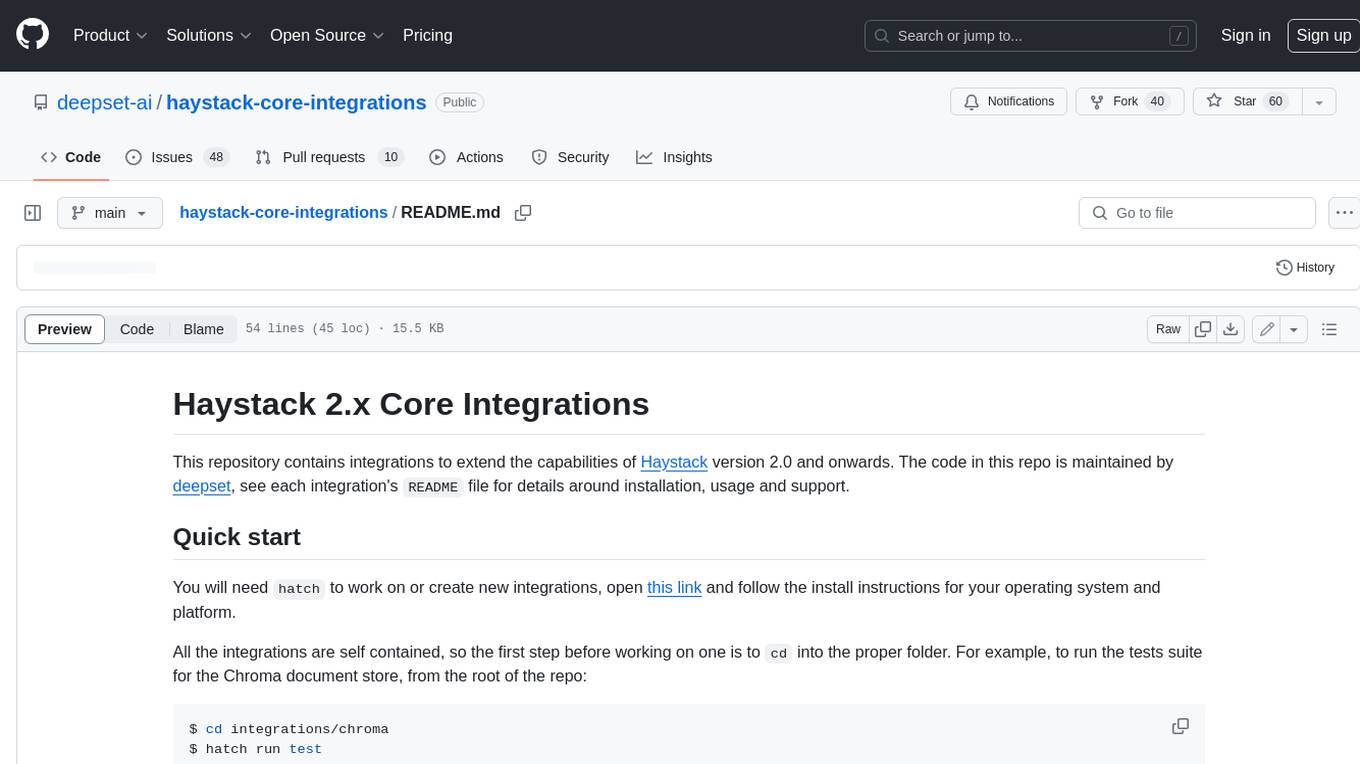
This repository contains integrations to extend the capabilities of Haystack version 2.0 and onwards. The code in this repo is maintained by deepset, see each integration's `README` file for details around installation, usage and support.
README:
This repository contains integrations to extend the capabilities of Haystack. The code in this repo is maintained by deepset, see each integration's README file for details around installation, usage and support.
You will need hatch to work on or create new integrations, open this link
and follow the install instructions for your operating system and platform.
All the integrations are self contained, so the first step before working on one is to cd into the proper folder.
For example, to run the tests suite for the Chroma document store, from the root of the repo:
$ cd integrations/chroma
$ hatch run test:allHatch will take care of setting up an isolated Python environment and run the tests.
Please check out our Contribution Guidelines for all the details.
[!NOTE] Only maintainers can release new versions of integrations. If you're a community contributor and want to release a new version of an integration, reach out to a maintainer.
To release a new version of an integration to PyPI tag the commit with the right version number and push the tag to GitHub. The GitHub Actions workflow will take care of the rest.
-
Tag the commit with the right version number
The tag needs to have the following format:
git tag integrations/<INTEGRATION_FOLDER_NAME>-<version>For example, if we want to release version 1.0.99 of the google-vertex-haystack integration we'd have to push the tag:
git tag integrations/google_vertex-v1.0.99 -
Push the tag to GitHub
git push --tags origin -
Wait for the CI to do its magic
-
Review the changelog PR
If the release is successful, the HaystackBot will open a pull request to generate the changelog. Add yourself as the reviewer. If there are any issues, edit the changelog manually.
[!IMPORTANT]
To ensure the changelog is accurate, it's recommended to tag a commit that includes the actual changes for the integration (usually the PR merge commit). Tagging a commit that doesn't contain those changes can lead to an incorrect changelog.
For Tasks:
Click tags to check more tools for each tasksFor Jobs:
Alternative AI tools for haystack-core-integrations
Similar Open Source Tools

haystack-core-integrations
This repository contains integrations to extend the capabilities of Haystack version 2.0 and onwards. The code in this repo is maintained by deepset, see each integration's `README` file for details around installation, usage and support.
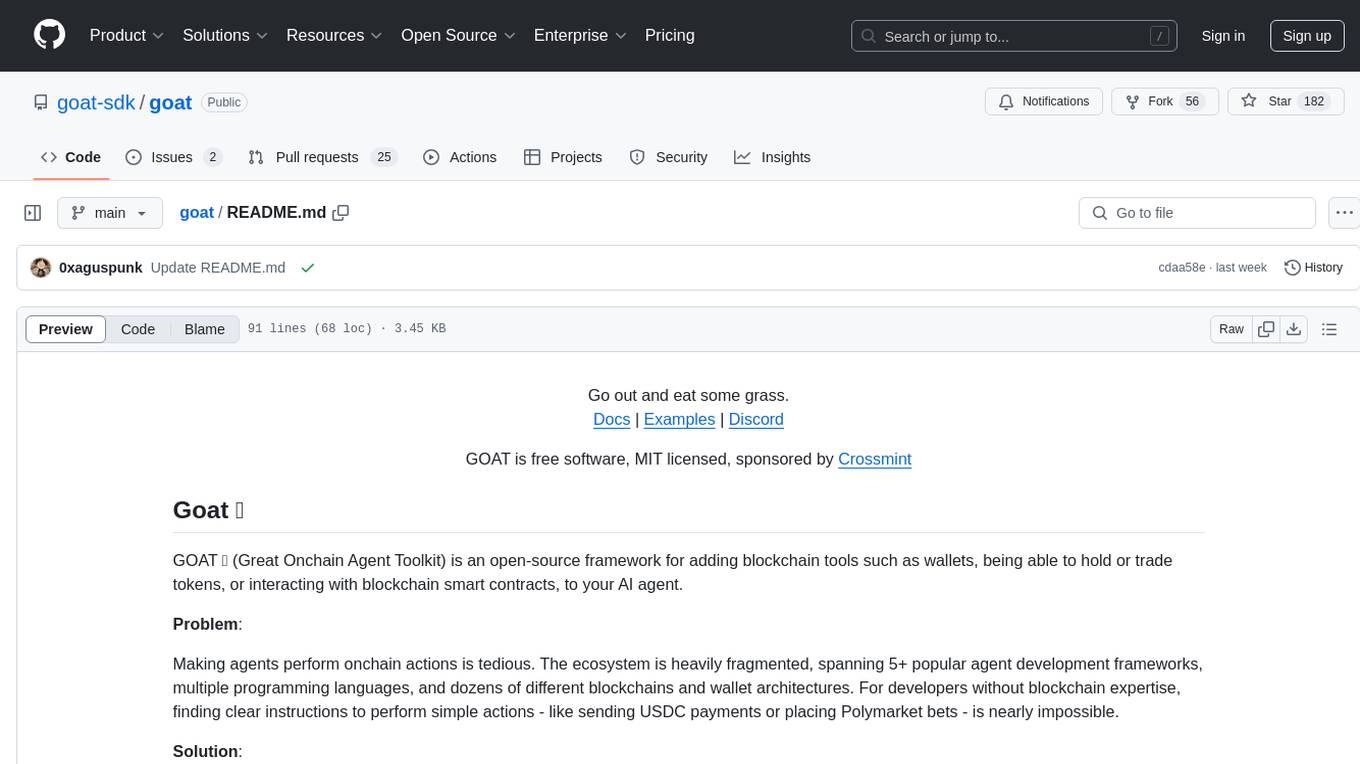
goat
GOAT (Great Onchain Agent Toolkit) is an open-source framework designed to simplify the process of making AI agents perform onchain actions by providing a provider-agnostic solution that abstracts away the complexities of interacting with blockchain tools such as wallets, token trading, and smart contracts. It offers a catalog of ready-made blockchain actions for agent developers and allows dApp/smart contract developers to develop plugins for easy access by agents. With compatibility across popular agent frameworks, support for multiple blockchains and wallet providers, and customizable onchain functionalities, GOAT aims to streamline the integration of blockchain capabilities into AI agents.
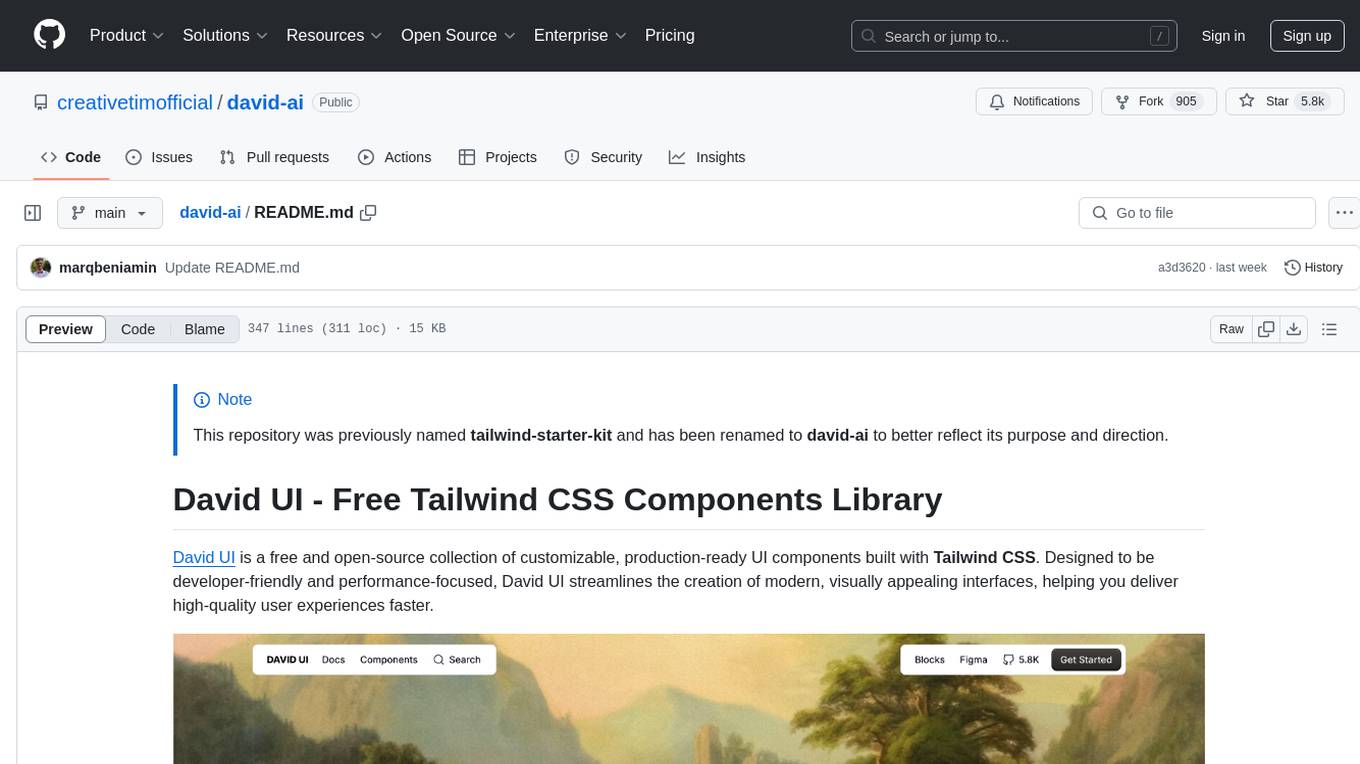
david-ai
David UI is a free and open-source collection of customizable, production-ready UI components built with Tailwind CSS. It is designed to be developer-friendly and performance-focused, streamlining the creation of modern, visually appealing interfaces to help deliver high-quality user experiences faster.

swift
SWIFT (Scalable lightWeight Infrastructure for Fine-Tuning) supports training, inference, evaluation and deployment of nearly **200 LLMs and MLLMs** (multimodal large models). Developers can directly apply our framework to their own research and production environments to realize the complete workflow from model training and evaluation to application. In addition to supporting the lightweight training solutions provided by [PEFT](https://github.com/huggingface/peft), we also provide a complete **Adapters library** to support the latest training techniques such as NEFTune, LoRA+, LLaMA-PRO, etc. This adapter library can be used directly in your own custom workflow without our training scripts. To facilitate use by users unfamiliar with deep learning, we provide a Gradio web-ui for controlling training and inference, as well as accompanying deep learning courses and best practices for beginners. Additionally, we are expanding capabilities for other modalities. Currently, we support full-parameter training and LoRA training for AnimateDiff.

PocketFlow
Pocket Flow is a 100-line minimalist LLM framework designed for (Multi-)Agents, Workflow, RAG, etc. It provides a core abstraction for LLM projects by focusing on computation and communication through a graph structure and shared store. The framework aims to support the development of LLM Agents, such as Cursor AI, by offering a minimal and low-level approach that is well-suited for understanding and usage. Users can install Pocket Flow via pip or by copying the source code, and detailed documentation is available on the project website.
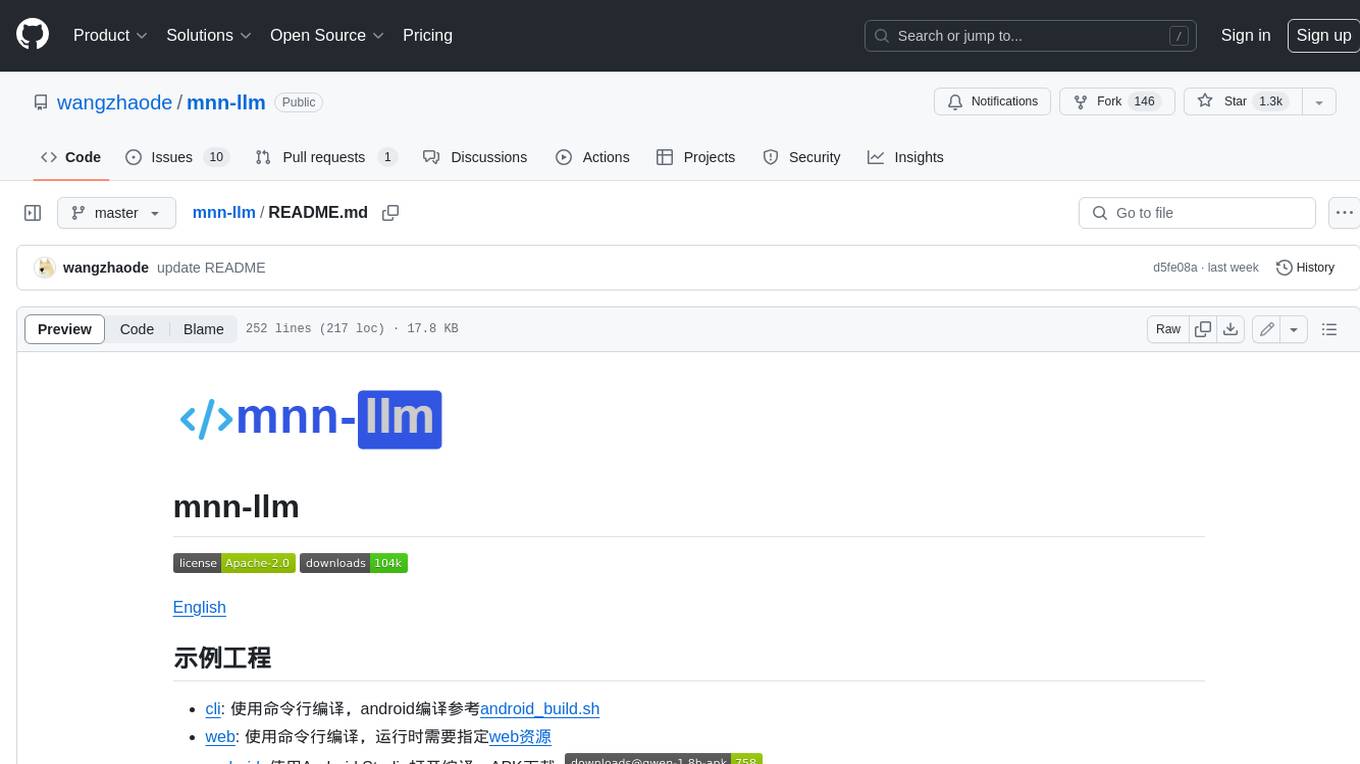
mnn-llm
MNN-LLM is a high-performance inference engine for large language models (LLMs) on mobile and embedded devices. It provides optimized implementations of popular LLM models, such as ChatGPT, BLOOM, and GPT-3, enabling developers to easily integrate these models into their applications. MNN-LLM is designed to be efficient and lightweight, making it suitable for resource-constrained devices. It supports various deployment options, including mobile apps, web applications, and embedded systems. With MNN-LLM, developers can leverage the power of LLMs to enhance their applications with natural language processing capabilities, such as text generation, question answering, and dialogue generation.
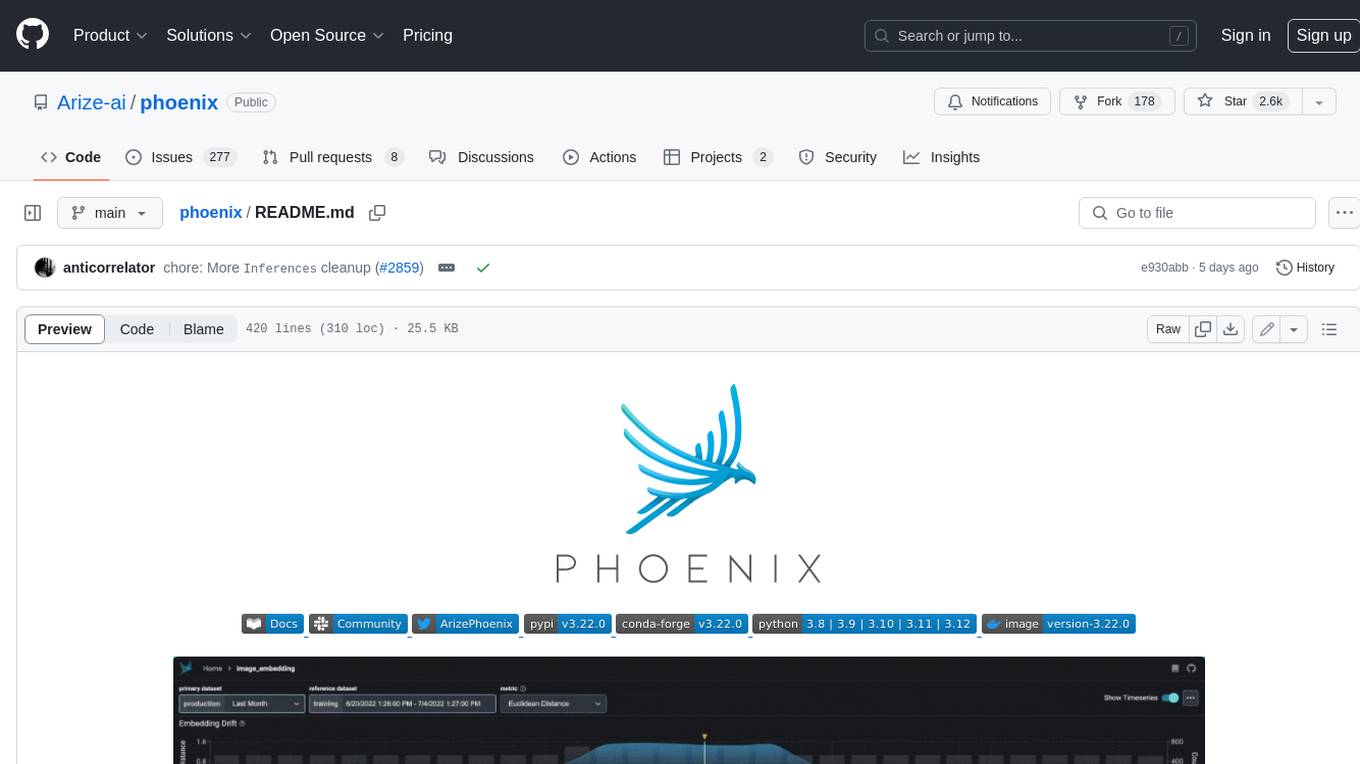
phoenix
Phoenix is a tool that provides MLOps and LLMOps insights at lightning speed with zero-config observability. It offers a notebook-first experience for monitoring models and LLM Applications by providing LLM Traces, LLM Evals, Embedding Analysis, RAG Analysis, and Structured Data Analysis. Users can trace through the execution of LLM Applications, evaluate generative models, explore embedding point-clouds, visualize generative application's search and retrieval process, and statistically analyze structured data. Phoenix is designed to help users troubleshoot problems related to retrieval, tool execution, relevance, toxicity, drift, and performance degradation.
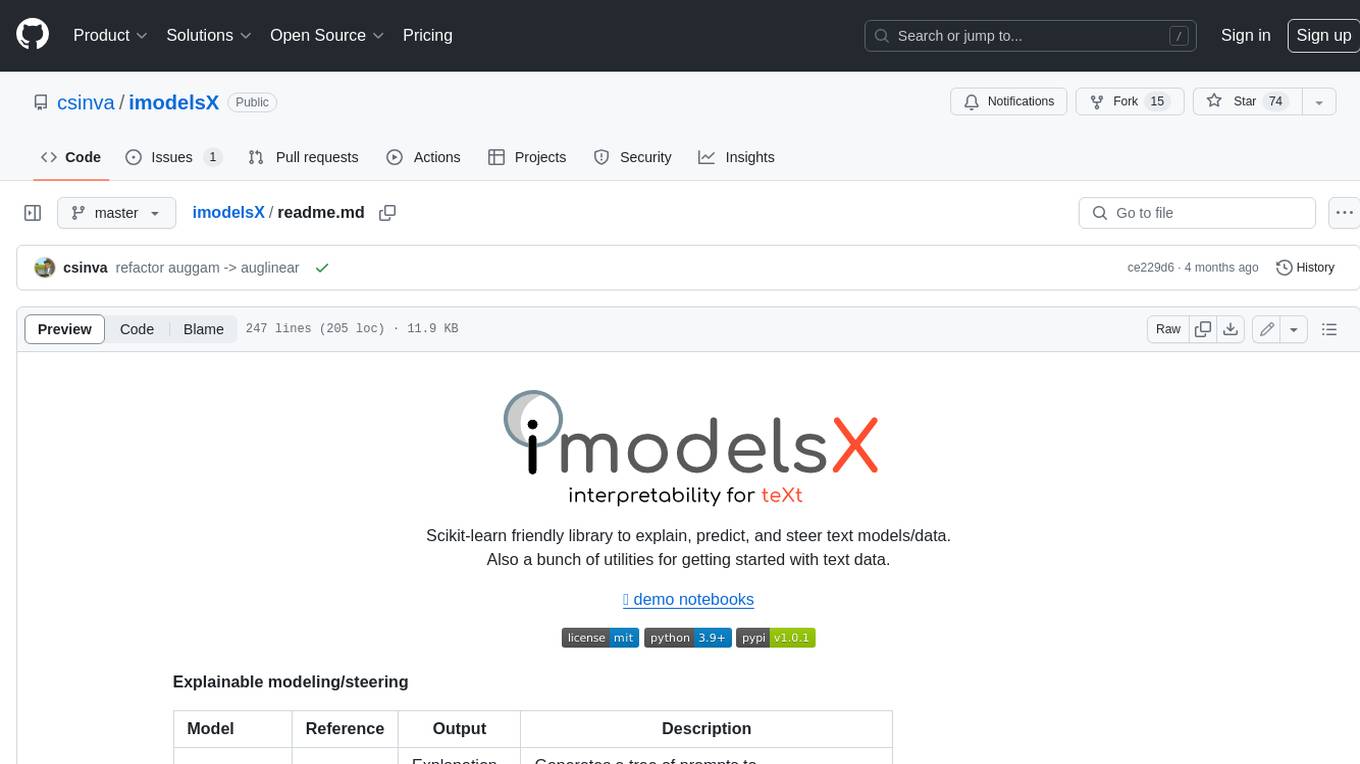
imodelsX
imodelsX is a Scikit-learn friendly library that provides tools for explaining, predicting, and steering text models/data. It also includes a collection of utilities for getting started with text data. **Explainable modeling/steering** | Model | Reference | Output | Description | |---|---|---|---| | Tree-Prompt | [Reference](https://github.com/microsoft/AugML/tree/main/imodelsX/tree_prompt) | Explanation + Steering | Generates a tree of prompts to steer an LLM (_Official_) | | iPrompt | [Reference](https://github.com/microsoft/AugML/tree/main/imodelsX/iprompt) | Explanation + Steering | Generates a prompt that explains patterns in data (_Official_) | | AutoPrompt | [Reference](https://github.com/microsoft/AugML/tree/main/imodelsX/autoprompt) | Explanation + Steering | Find a natural-language prompt using input-gradients (⌛ In progress)| | D3 | [Reference](https://github.com/microsoft/AugML/tree/main/imodelsX/d3) | Explanation | Explain the difference between two distributions | | SASC | [Reference](https://github.com/microsoft/AugML/tree/main/imodelsX/sasc) | Explanation | Explain a black-box text module using an LLM (_Official_) | | Aug-Linear | [Reference](https://github.com/microsoft/AugML/tree/main/imodelsX/aug_linear) | Linear model | Fit better linear model using an LLM to extract embeddings (_Official_) | | Aug-Tree | [Reference](https://github.com/microsoft/AugML/tree/main/imodelsX/aug_tree) | Decision tree | Fit better decision tree using an LLM to expand features (_Official_) | **General utilities** | Model | Reference | |---|---| | LLM wrapper| [Reference](https://github.com/microsoft/AugML/tree/main/imodelsX/llm) | Easily call different LLMs | | | Dataset wrapper| [Reference](https://github.com/microsoft/AugML/tree/main/imodelsX/data) | Download minimially processed huggingface datasets | | | Bag of Ngrams | [Reference](https://github.com/microsoft/AugML/tree/main/imodelsX/bag_of_ngrams) | Learn a linear model of ngrams | | | Linear Finetune | [Reference](https://github.com/microsoft/AugML/tree/main/imodelsX/linear_finetune) | Finetune a single linear layer on top of LLM embeddings | | **Related work** * [imodels package](https://github.com/microsoft/interpretml/tree/main/imodels) (JOSS 2021) - interpretable ML package for concise, transparent, and accurate predictive modeling (sklearn-compatible). * [Adaptive wavelet distillation](https://arxiv.org/abs/2111.06185) (NeurIPS 2021) - distilling a neural network into a concise wavelet model * [Transformation importance](https://arxiv.org/abs/1912.04938) (ICLR 2020 workshop) - using simple reparameterizations, allows for calculating disentangled importances to transformations of the input (e.g. assigning importances to different frequencies) * [Hierarchical interpretations](https://arxiv.org/abs/1807.03343) (ICLR 2019) - extends CD to CNNs / arbitrary DNNs, and aggregates explanations into a hierarchy * [Interpretation regularization](https://arxiv.org/abs/2006.14340) (ICML 2020) - penalizes CD / ACD scores during training to make models generalize better * [PDR interpretability framework](https://www.pnas.org/doi/10.1073/pnas.1814225116) (PNAS 2019) - an overarching framewwork for guiding and framing interpretable machine learning
helicone
Helicone is an open-source observability platform designed for Language Learning Models (LLMs). It logs requests to OpenAI in a user-friendly UI, offers caching, rate limits, and retries, tracks costs and latencies, provides a playground for iterating on prompts and chat conversations, supports collaboration, and will soon have APIs for feedback and evaluation. The platform is deployed on Cloudflare and consists of services like Web (NextJs), Worker (Cloudflare Workers), Jawn (Express), Supabase, and ClickHouse. Users can interact with Helicone locally by setting up the required services and environment variables. The platform encourages contributions and provides resources for learning, documentation, and integrations.
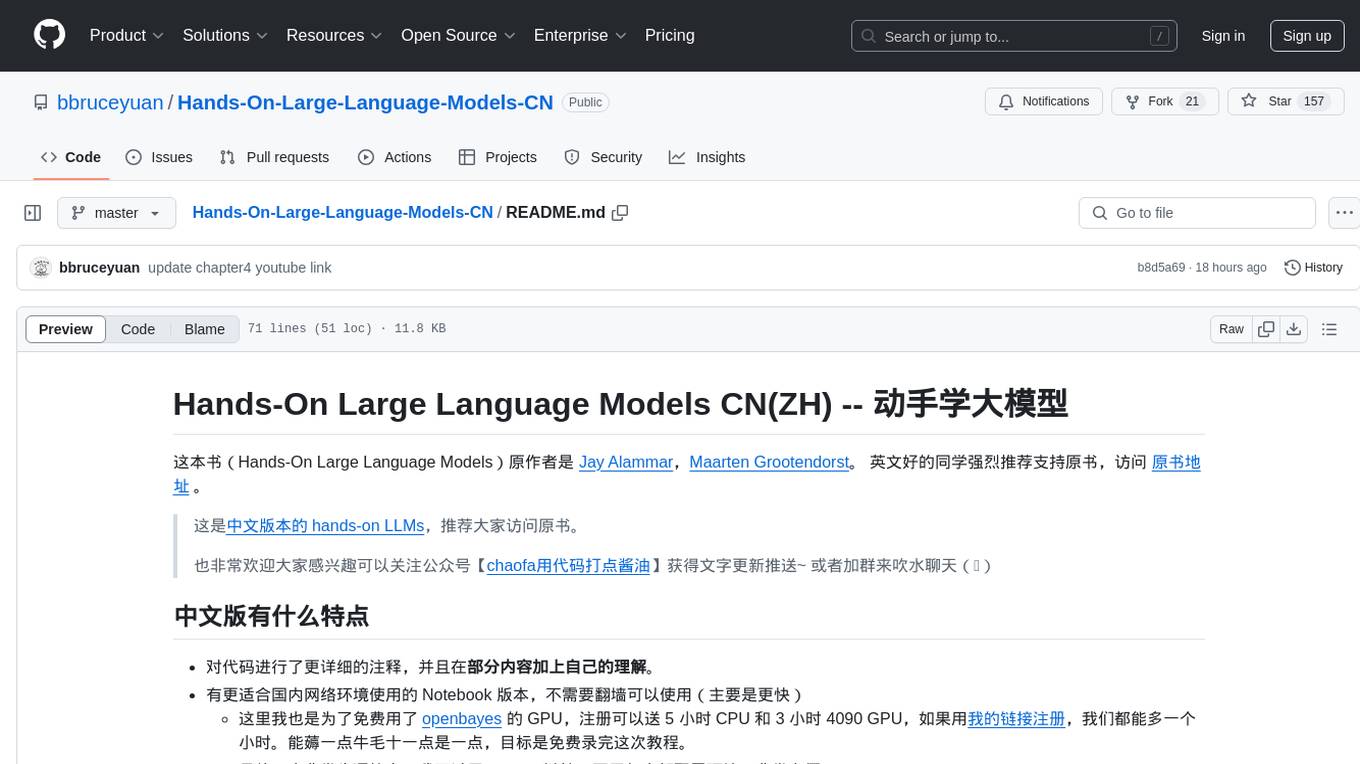
Hands-On-Large-Language-Models-CN
Hands-On Large Language Models CN(ZH) is a Chinese version of the book 'Hands-On Large Language Models' by Jay Alammar and Maarten Grootendorst. It provides detailed code annotations and additional insights, offers Notebook versions suitable for Chinese network environments, utilizes openbayes for free GPU access, allows convenient environment setup with vscode, and includes accompanying Chinese language videos on platforms like Bilibili and YouTube. The book covers various chapters on topics like Tokens and Embeddings, Transformer LLMs, Text Classification, Text Clustering, Prompt Engineering, Text Generation, Semantic Search, Multimodal LLMs, Text Embedding Models, Fine-tuning Models, and more.
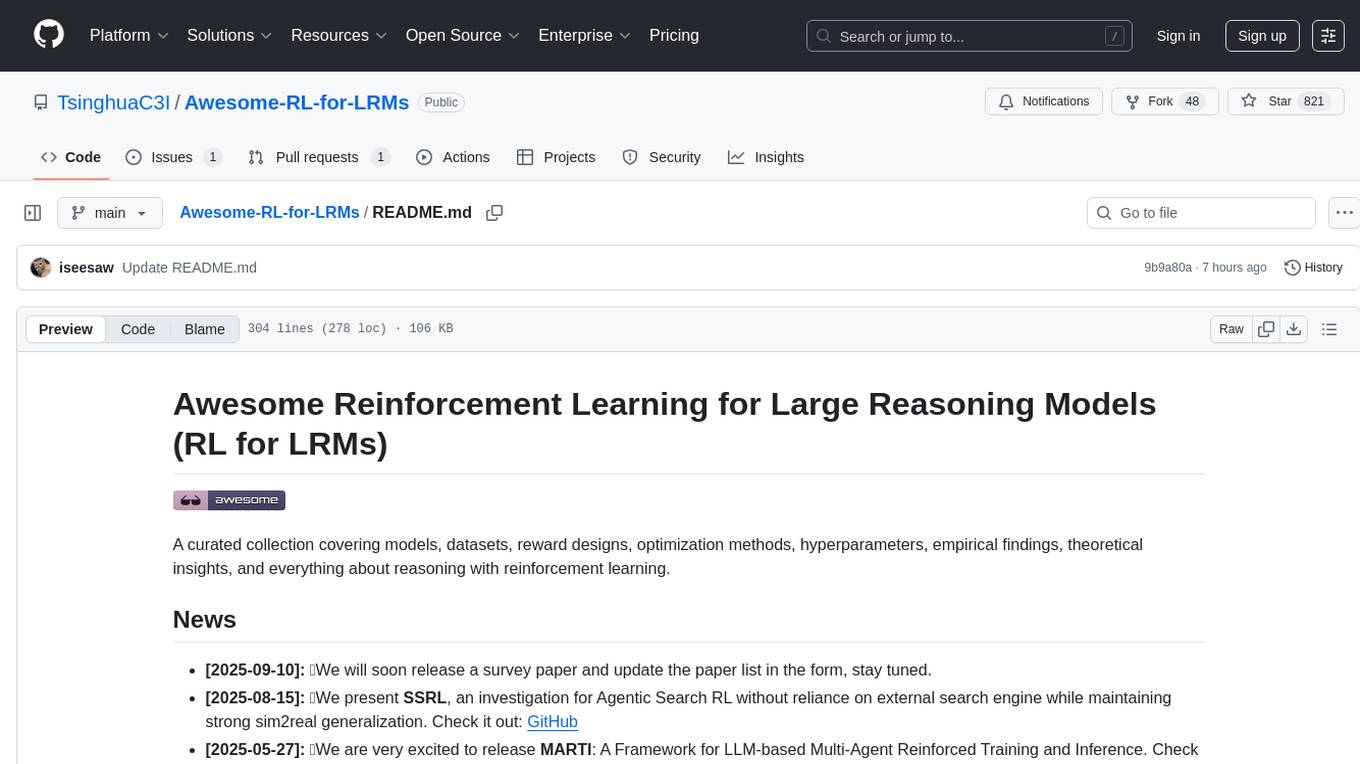
Awesome-RL-for-LRMs
This repository contains a collection of awesome resources for reinforcement learning in language models. It includes tutorials, code implementations, research papers, and tools to help researchers and practitioners explore and apply reinforcement learning techniques in natural language processing tasks. Whether you are a beginner or an expert in the field, this repository aims to provide valuable insights and guidance to enhance your understanding and implementation of reinforcement learning in language models.

oumi
Oumi is an open-source platform for building state-of-the-art foundation models, offering tools for data preparation, training, evaluation, and deployment. It supports training and fine-tuning models with various parameters, working with text and multimodal models, synthesizing and curating training data, deploying models efficiently, evaluating models comprehensively, and running on different platforms. Oumi provides a consistent API, reliability, and flexibility for research purposes.
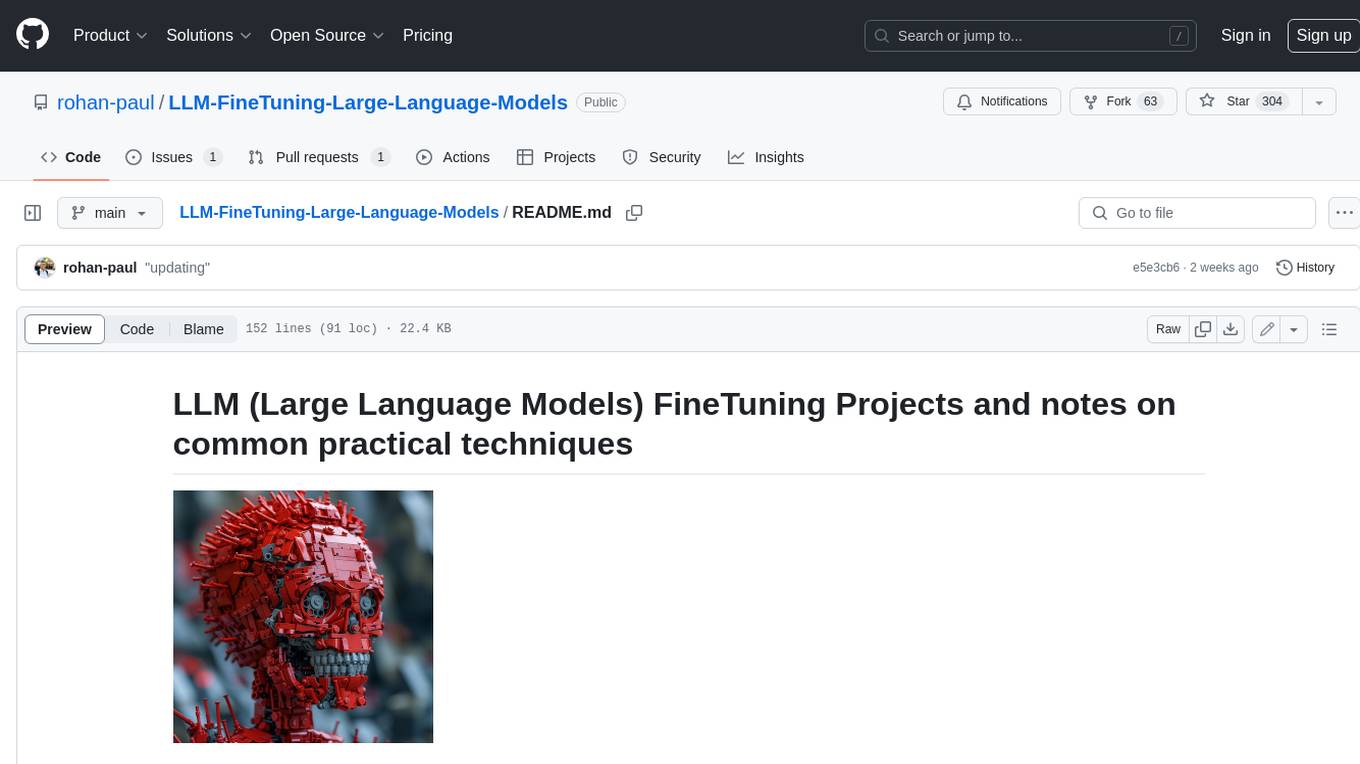
LLM-FineTuning-Large-Language-Models
This repository contains projects and notes on common practical techniques for fine-tuning Large Language Models (LLMs). It includes fine-tuning LLM notebooks, Colab links, LLM techniques and utils, and other smaller language models. The repository also provides links to YouTube videos explaining the concepts and techniques discussed in the notebooks.
For similar tasks

haystack-core-integrations
This repository contains integrations to extend the capabilities of Haystack version 2.0 and onwards. The code in this repo is maintained by deepset, see each integration's `README` file for details around installation, usage and support.
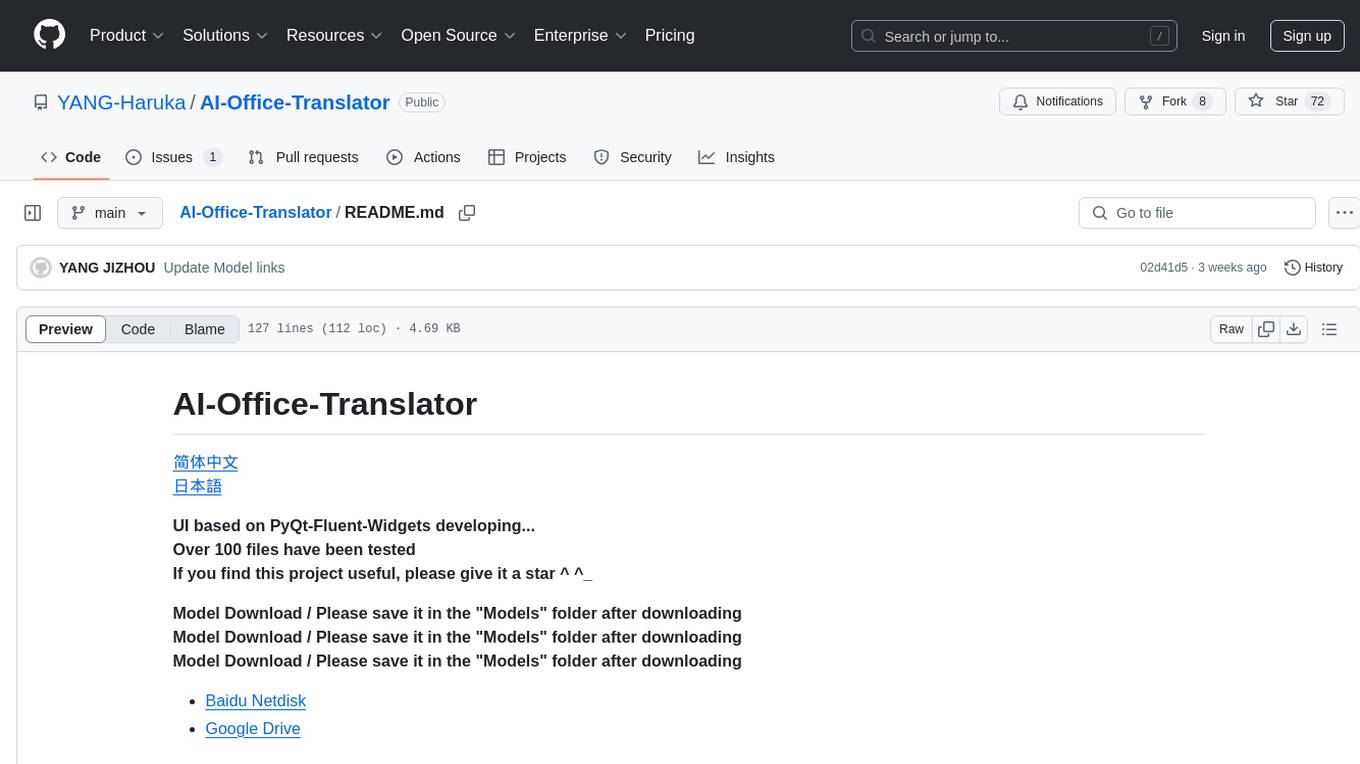
AI-Office-Translator
AI-Office-Translator is a free, fully localized, user-friendly translation tool that helps you translate Office files (Word, PowerPoint, and Excel) between different languages. It supports .docx, .pptx, and .xlsx files and allows translation between English, Chinese, and Japanese. Users can run the tool after installing CUDA, downloading Ollama dependencies and models, setting up a virtual environment (optional), and installing requirements. The tool provides a UI where users can select languages, models, upload files for translation, start translation, and download translated files. It also supports an online mode with API key integration. The software is open-source under GPL-3.0 license and only provides AI translation services, with users expected to engage in legal translation activities.
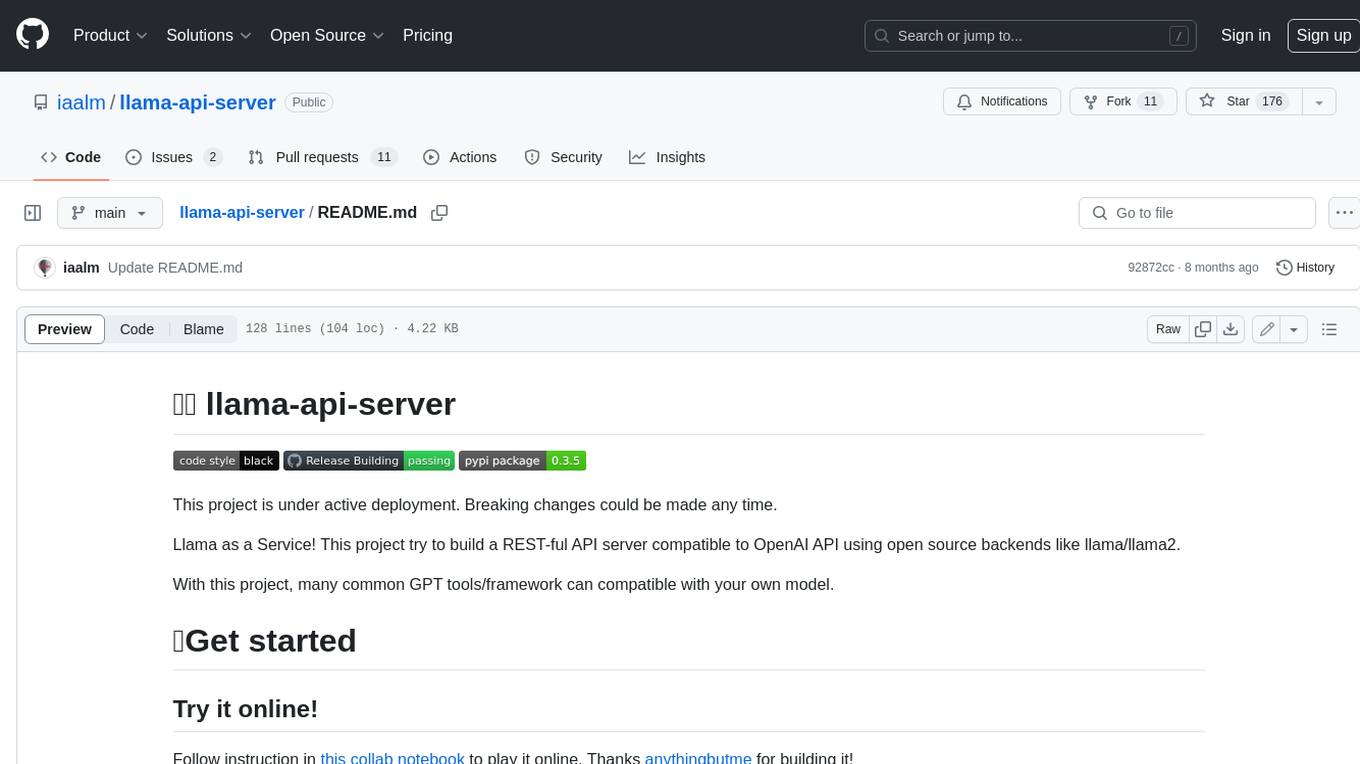
llama-api-server
This project aims to create a RESTful API server compatible with the OpenAI API using open-source backends like llama/llama2. With this project, various GPT tools/frameworks can be compatible with your own model. Key features include: - **Compatibility with OpenAI API**: The API server follows the OpenAI API structure, allowing seamless integration with existing tools and frameworks. - **Support for Multiple Backends**: The server supports both llama.cpp and pyllama backends, providing flexibility in model selection. - **Customization Options**: Users can configure model parameters such as temperature, top_p, and top_k to fine-tune the model's behavior. - **Batch Processing**: The API supports batch processing for embeddings, enabling efficient handling of multiple inputs. - **Token Authentication**: The server utilizes token authentication to secure access to the API. This tool is particularly useful for developers and researchers who want to integrate large language models into their applications or explore custom models without relying on proprietary APIs.

VisionCraft
The VisionCraft API is a free API for using over 100 different AI models. From images to sound.
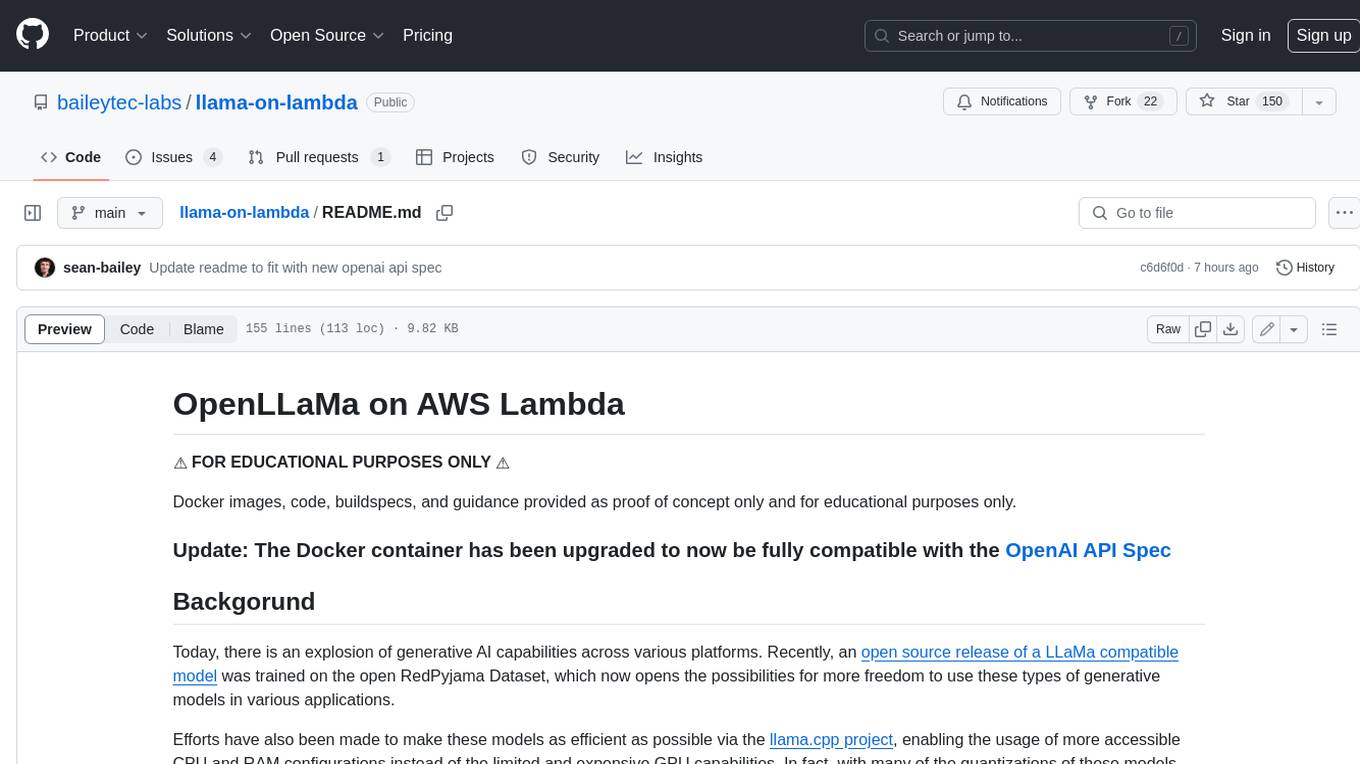
llama-on-lambda
This project provides a proof of concept for deploying a scalable, serverless LLM Generative AI inference engine on AWS Lambda. It leverages the llama.cpp project to enable the usage of more accessible CPU and RAM configurations instead of limited and expensive GPU capabilities. By deploying a container with the llama.cpp converted models onto AWS Lambda, this project offers the advantages of scale, minimizing cost, and maximizing compute availability. The project includes AWS CDK code to create and deploy a Lambda function leveraging your model of choice, with a FastAPI frontend accessible from a Lambda URL. It is important to note that you will need ggml quantized versions of your model and model sizes under 6GB, as your inference RAM requirements cannot exceed 9GB or your Lambda function will fail.

LLM-FineTuning-Large-Language-Models
This repository contains projects and notes on common practical techniques for fine-tuning Large Language Models (LLMs). It includes fine-tuning LLM notebooks, Colab links, LLM techniques and utils, and other smaller language models. The repository also provides links to YouTube videos explaining the concepts and techniques discussed in the notebooks.
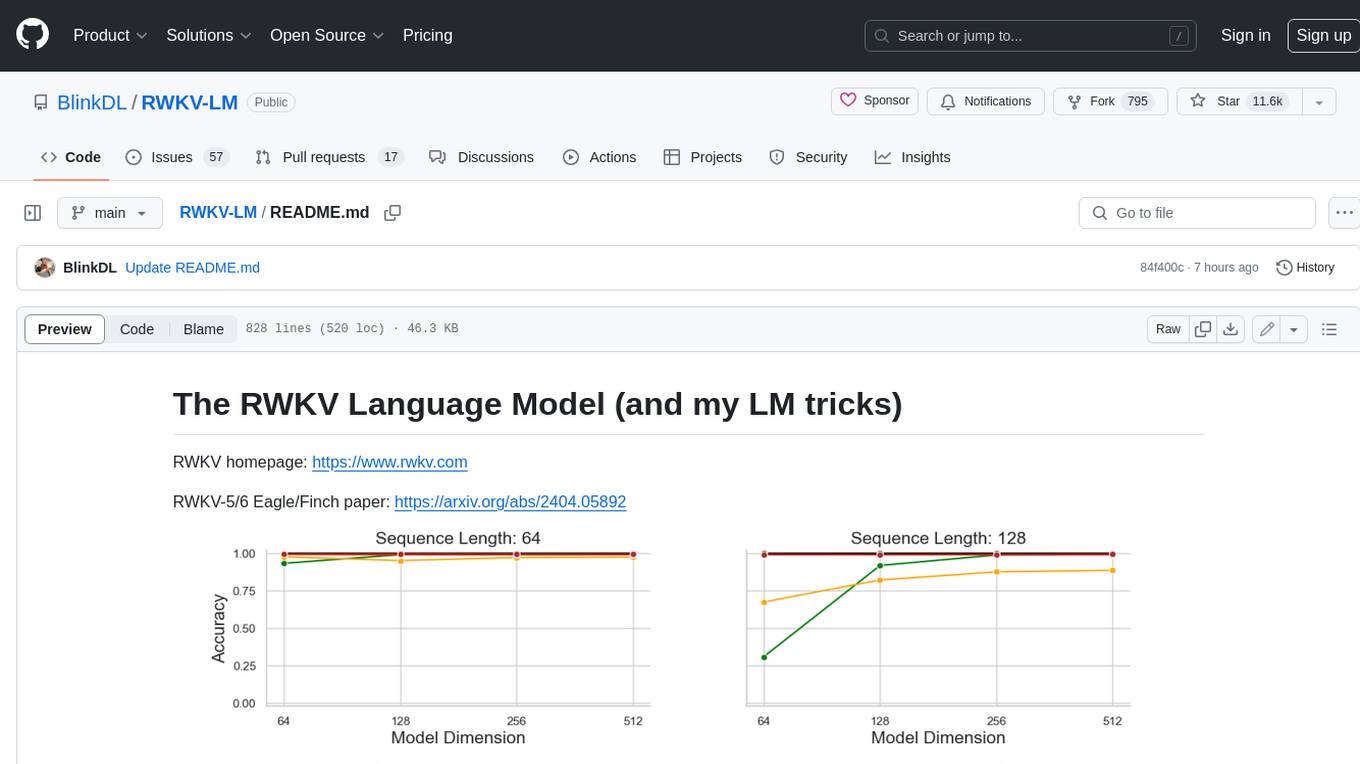
RWKV-LM
RWKV is an RNN with Transformer-level LLM performance, which can also be directly trained like a GPT transformer (parallelizable). And it's 100% attention-free. You only need the hidden state at position t to compute the state at position t+1. You can use the "GPT" mode to quickly compute the hidden state for the "RNN" mode. So it's combining the best of RNN and transformer - **great performance, fast inference, saves VRAM, fast training, "infinite" ctx_len, and free sentence embedding** (using the final hidden state).

awesome-transformer-nlp
This repository contains a hand-curated list of great machine (deep) learning resources for Natural Language Processing (NLP) with a focus on Generative Pre-trained Transformer (GPT), Bidirectional Encoder Representations from Transformers (BERT), attention mechanism, Transformer architectures/networks, Chatbot, and transfer learning in NLP.
For similar jobs

weave
Weave is a toolkit for developing Generative AI applications, built by Weights & Biases. With Weave, you can log and debug language model inputs, outputs, and traces; build rigorous, apples-to-apples evaluations for language model use cases; and organize all the information generated across the LLM workflow, from experimentation to evaluations to production. Weave aims to bring rigor, best-practices, and composability to the inherently experimental process of developing Generative AI software, without introducing cognitive overhead.
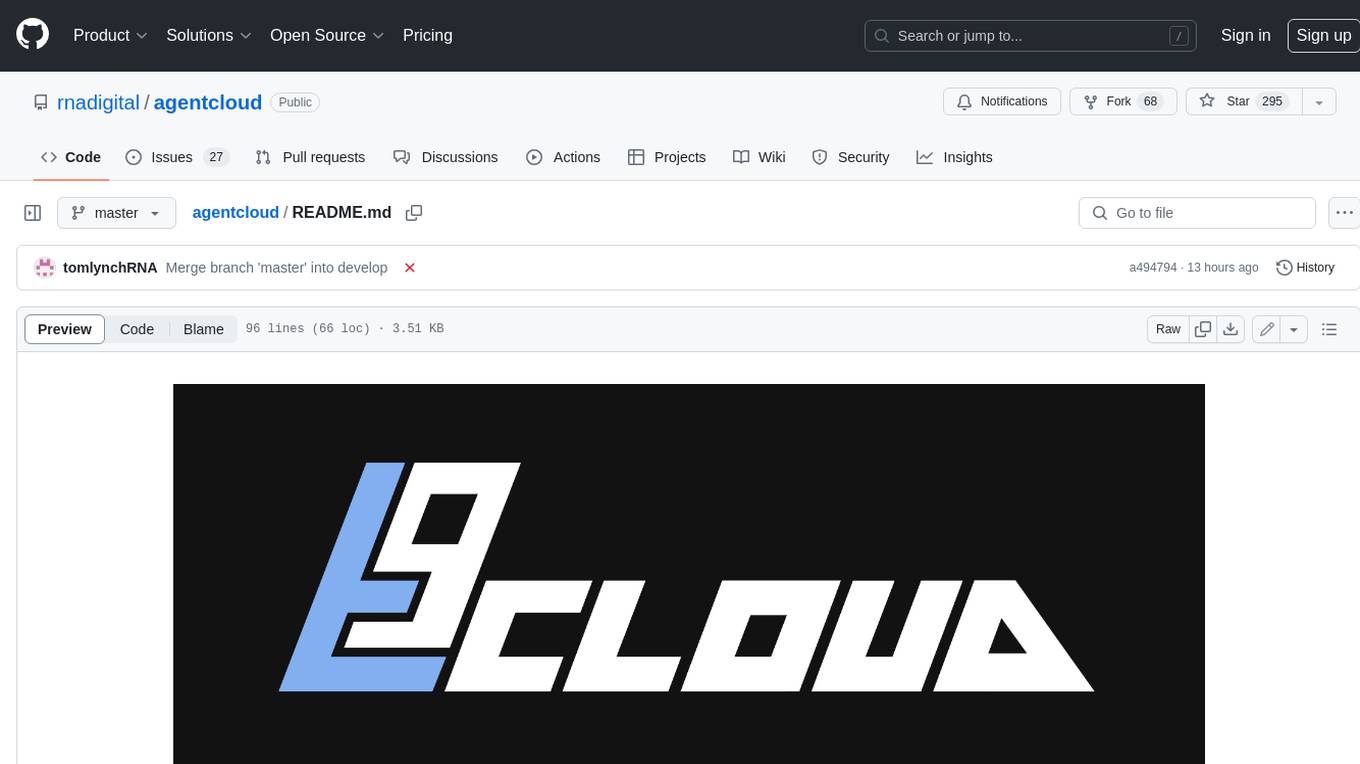
agentcloud
AgentCloud is an open-source platform that enables companies to build and deploy private LLM chat apps, empowering teams to securely interact with their data. It comprises three main components: Agent Backend, Webapp, and Vector Proxy. To run this project locally, clone the repository, install Docker, and start the services. The project is licensed under the GNU Affero General Public License, version 3 only. Contributions and feedback are welcome from the community.
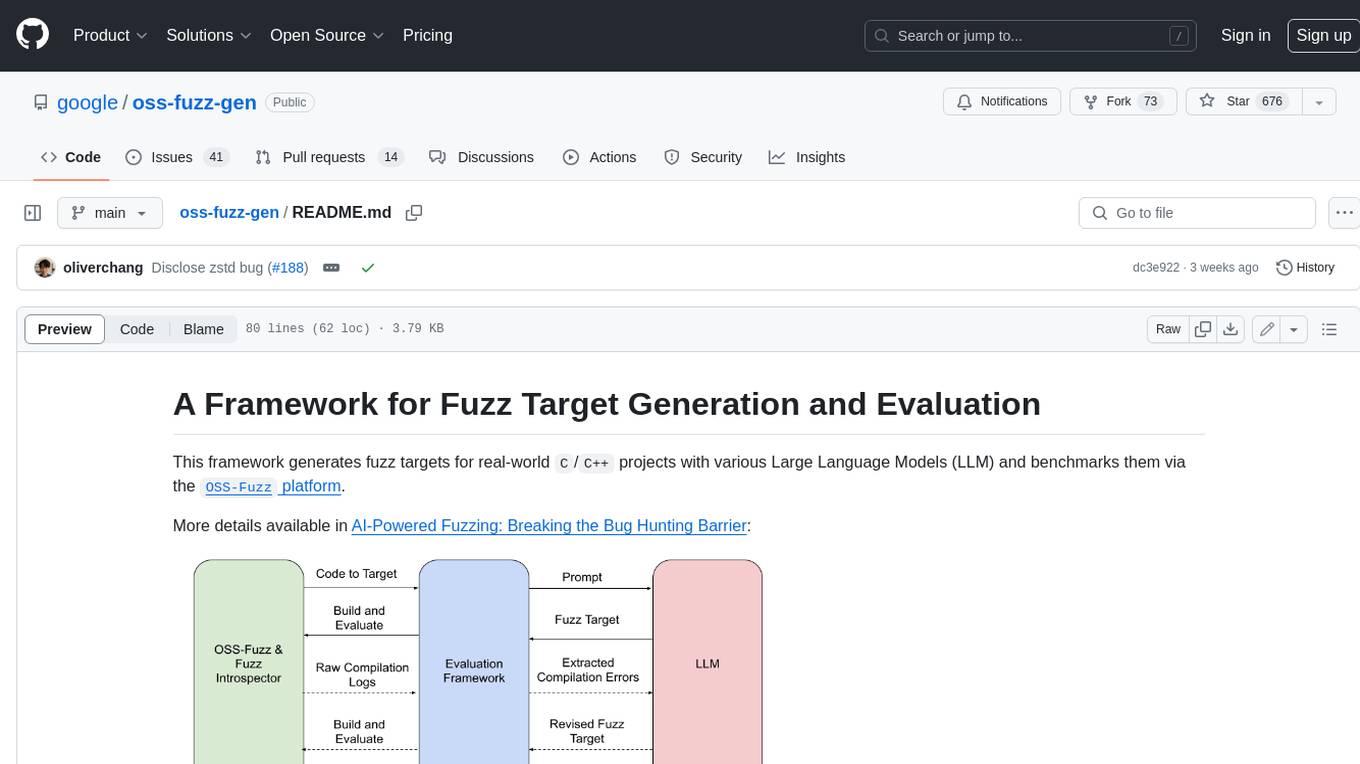
oss-fuzz-gen
This framework generates fuzz targets for real-world `C`/`C++` projects with various Large Language Models (LLM) and benchmarks them via the `OSS-Fuzz` platform. It manages to successfully leverage LLMs to generate valid fuzz targets (which generate non-zero coverage increase) for 160 C/C++ projects. The maximum line coverage increase is 29% from the existing human-written targets.

LLMStack
LLMStack is a no-code platform for building generative AI agents, workflows, and chatbots. It allows users to connect their own data, internal tools, and GPT-powered models without any coding experience. LLMStack can be deployed to the cloud or on-premise and can be accessed via HTTP API or triggered from Slack or Discord.

VisionCraft
The VisionCraft API is a free API for using over 100 different AI models. From images to sound.

kaito
Kaito is an operator that automates the AI/ML inference model deployment in a Kubernetes cluster. It manages large model files using container images, avoids tuning deployment parameters to fit GPU hardware by providing preset configurations, auto-provisions GPU nodes based on model requirements, and hosts large model images in the public Microsoft Container Registry (MCR) if the license allows. Using Kaito, the workflow of onboarding large AI inference models in Kubernetes is largely simplified.

PyRIT
PyRIT is an open access automation framework designed to empower security professionals and ML engineers to red team foundation models and their applications. It automates AI Red Teaming tasks to allow operators to focus on more complicated and time-consuming tasks and can also identify security harms such as misuse (e.g., malware generation, jailbreaking), and privacy harms (e.g., identity theft). The goal is to allow researchers to have a baseline of how well their model and entire inference pipeline is doing against different harm categories and to be able to compare that baseline to future iterations of their model. This allows them to have empirical data on how well their model is doing today, and detect any degradation of performance based on future improvements.
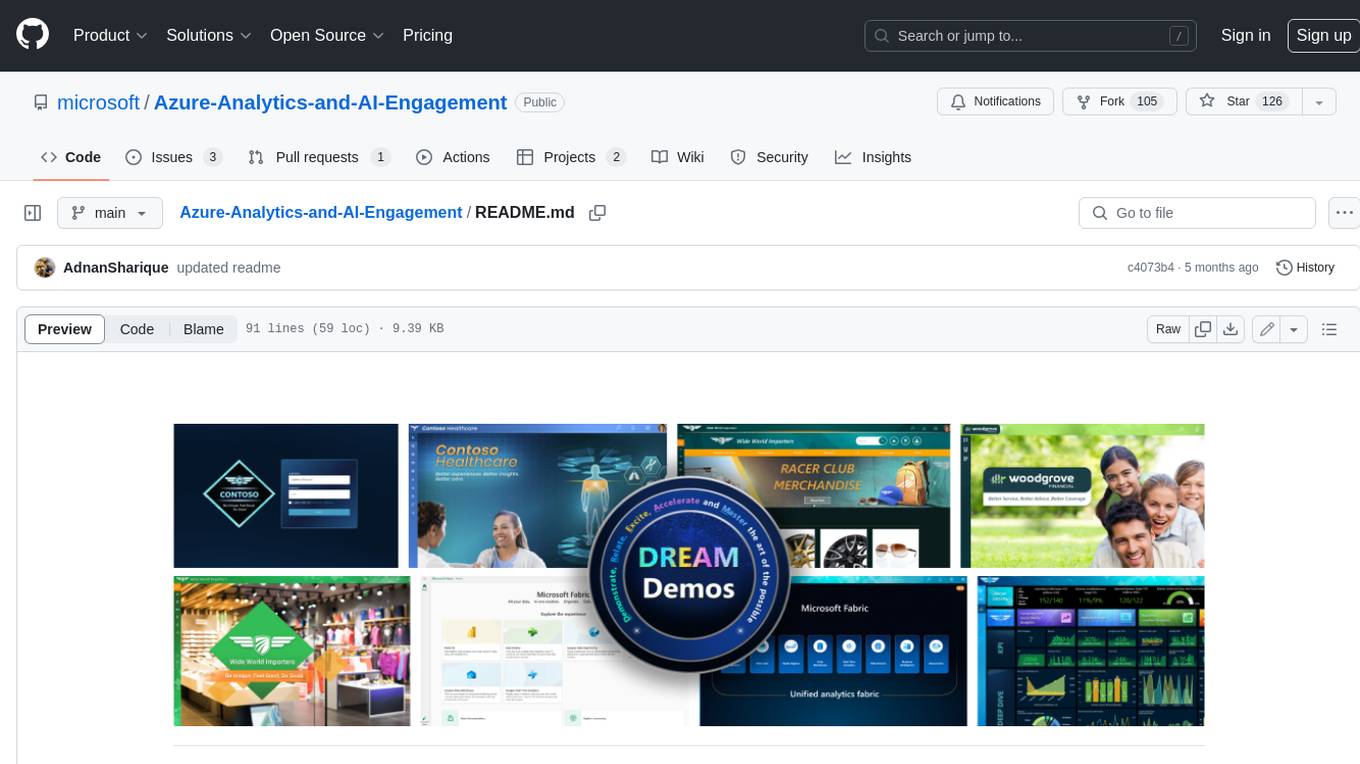
Azure-Analytics-and-AI-Engagement
The Azure-Analytics-and-AI-Engagement repository provides packaged Industry Scenario DREAM Demos with ARM templates (Containing a demo web application, Power BI reports, Synapse resources, AML Notebooks etc.) that can be deployed in a customer’s subscription using the CAPE tool within a matter of few hours. Partners can also deploy DREAM Demos in their own subscriptions using DPoC.











































